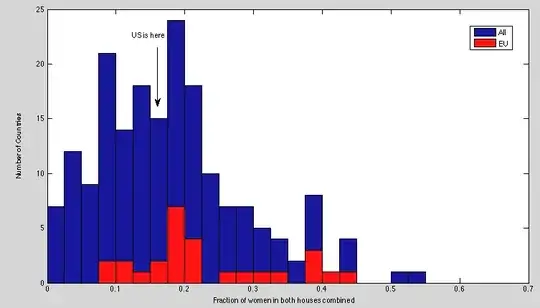TL;DR: The claim is true within reasonable rounding margin.
According to the Inter-Parliamentary Union, the US House of Representatives has the 69th-most women among all lower houses. In terms of ranking among nations, the US is ranked 89th in terms of female members of (lower) houses out of 188 countries. The US is also ranked behind Cuba (5th), China (51th), Iraq (35th) and Afghanistan (30th). Thus, the claim appears to be true.
Shouldn't we compare members in both houses, rather than just compare lower houses?
Well, if both houses were counted together, where applicable, the US would actually lose 8 ranks: Barbados, Antigua and Barbuda, St. Lucia, Bahamas, Grenada, Swaziland, Ireland, and Zimbabwe all would get more than 17% representation.
Shouldn't we compare the US to something more relevant than, say, Bhutan, or to places were parliaments have any relevance, unlike e.g. Belarus?
Compared to its direct neighbours, the US comes in third out of three. Mexico is #35 and Canada #41, when ties are counted as ranks (I didn't correct for combined houses).
Compared to the EU, the US comes in 21th out of 27+1. The US beats 6 out of the 27 member states if women in both houses are counted: Slovenia, Slovakia, Romania, Malta, Hungary, and Cyprus.
Just for fun: Compared to the Arab League, the US comes in 8th out of 21+1. Almost top third! Note that I didn't count Palestine, so there are 21 instead of 22 members. Honestly, I expected the US to do better here.
As an aside, this report compiled for the parliament of Canada mentions how election procedures can help or hurt women (and other underrepresented groups):
Canada’s electoral system is a “single-member plurality” or “first-past-the-post” system. In every federal electoral district, the candidate with the most votes wins a seat in the House of Commons and represents that riding as its Member of Parliament. It has been argued that this system tends to discourage the election of women and other under-represented groups.
BONUS TIME
Here's the distribution of everybody, and the EU:

If we split the EU into three groups (low, medium, high percentage of women in legislatures), then they're topping the bottom half of the low group. Really, in whichever way you turn this, the US looks bad - unless the US strives to be totally average (i.e on the level of Venezuela and Turkmenistan; also, I mean median here) in terms of representation of women in legislatures.
